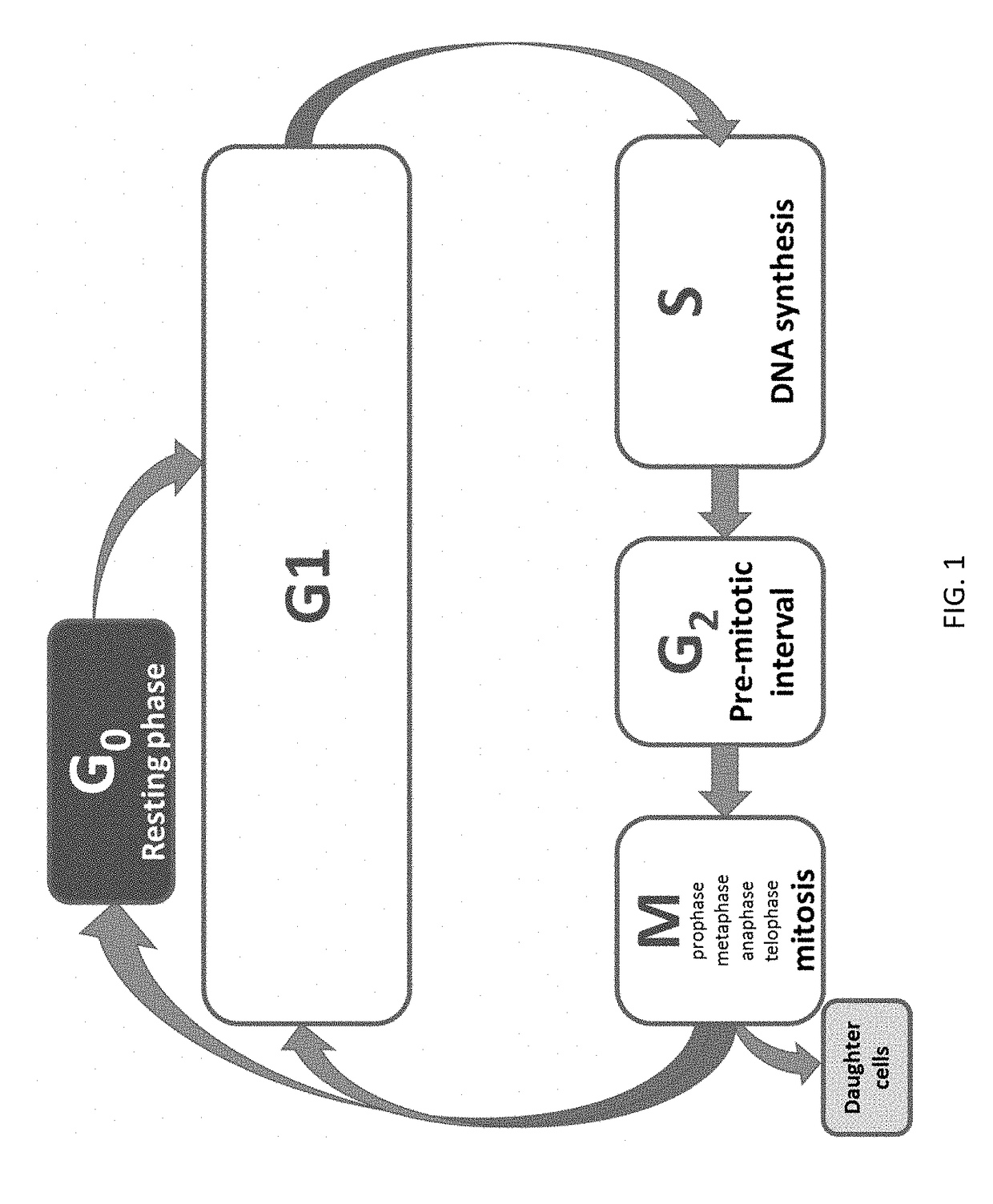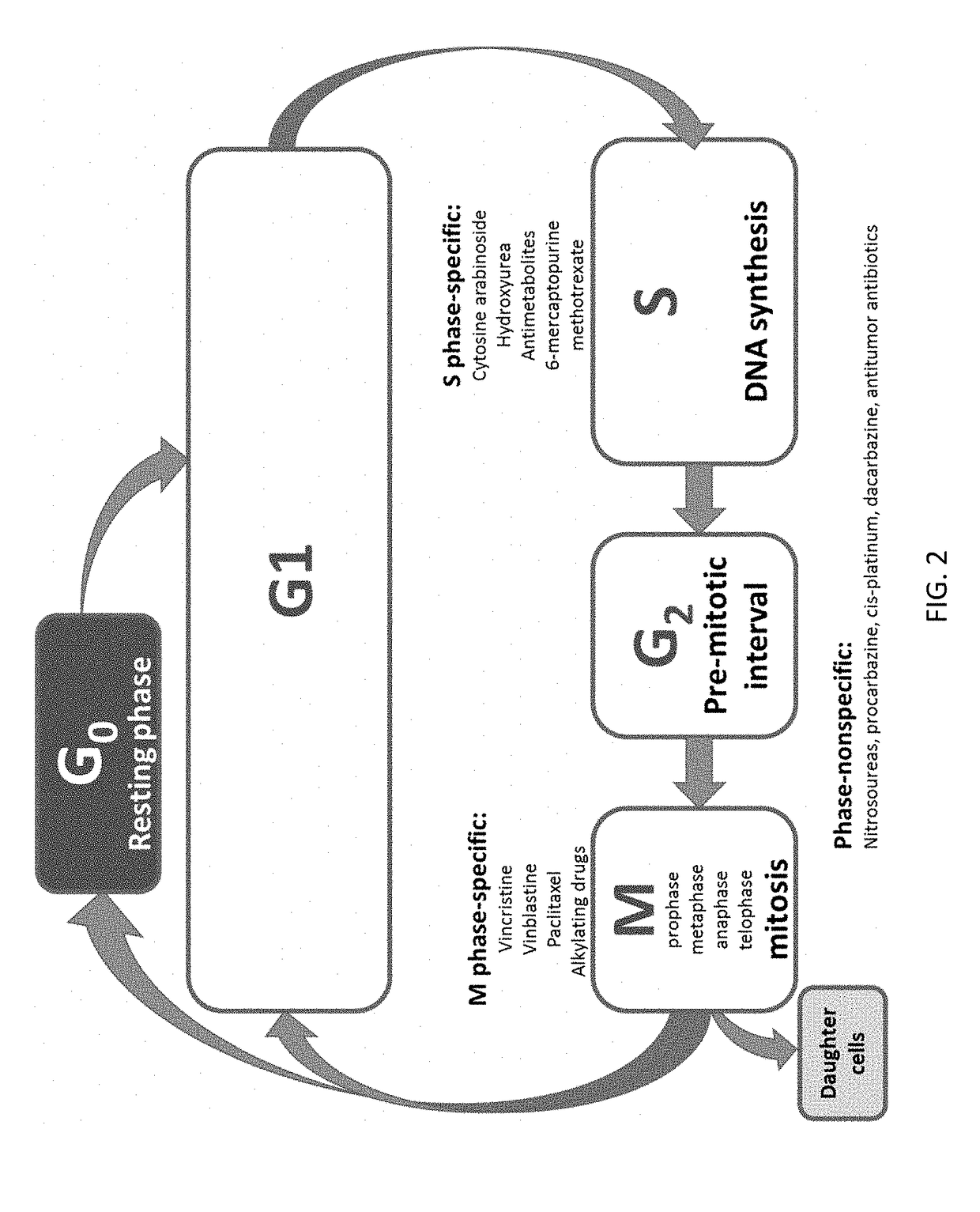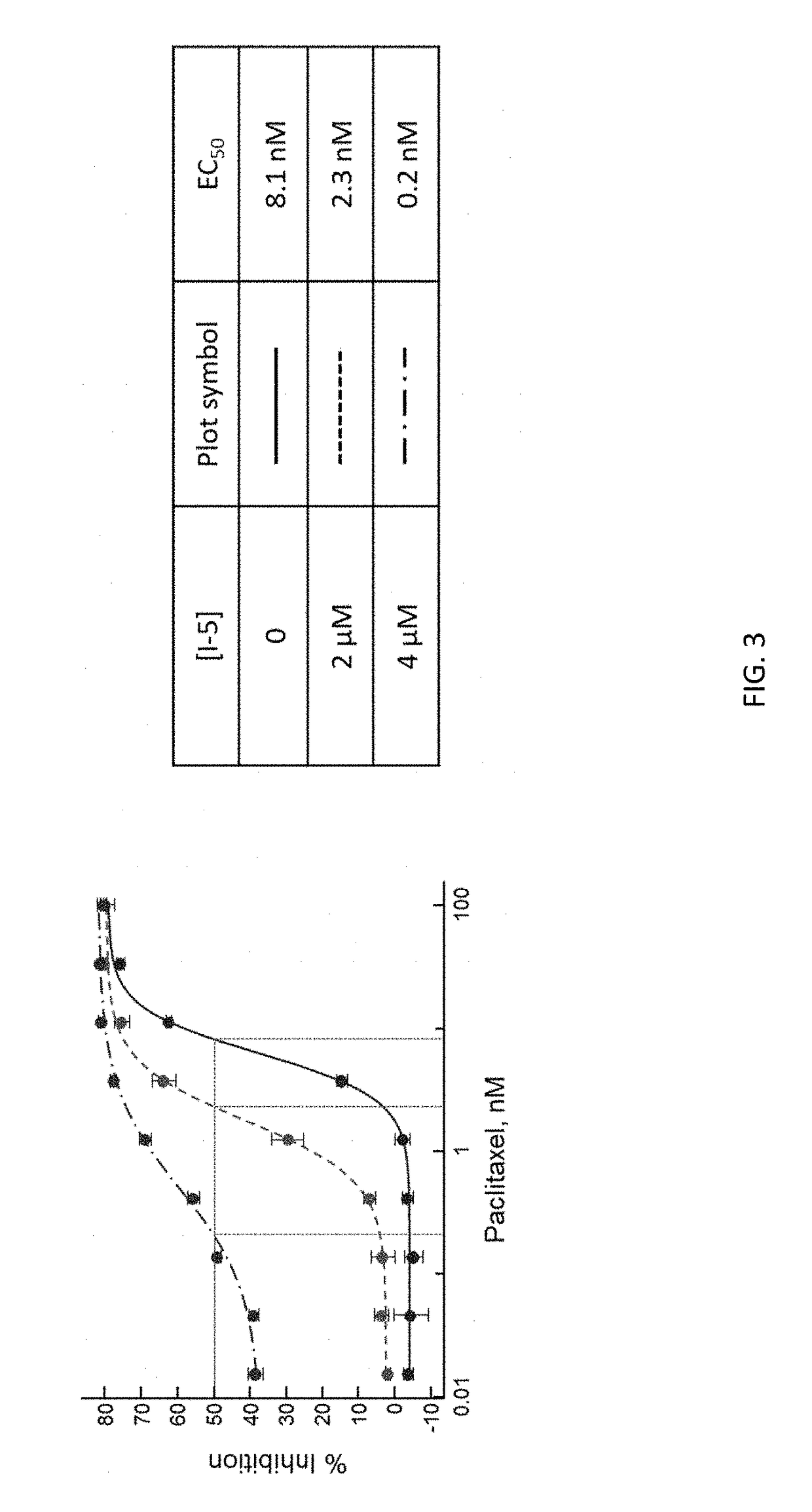Combinations for the treatment of neoplasms using quiescent cell targeting and inhibitors of mitosis
a technology of mitosis inhibitors and quiescent cells, which is applied in the direction of antineoplastic agents, medical preparations, pharmaceutical non-active ingredients, etc., can solve the problems of cancer recurrence upon re-entry, adverse effects of both anticancer therapies and radiation treatments, and cannot be predicted, so as to improve survival, improve the effect of outcome and reduce the severity
- Summary
- Abstract
- Description
- Claims
- Application Information
AI Technical Summary
Benefits of technology
Problems solved by technology
Method used
Image
Examples
example 1
tion of Fraction of Quiescent Cancer Cells within a Population
[0106]The following cell lines were obtained from ATCC and cultured according to the ATCC recommendations: DMS273—small cell lung cancer cell line; H1975—non-small cell lung cancer cell line harboring L858R and T790M mutations in EGFR TK; A549—a non-small cell lung cancer cell line with wild type EGFR; LNCap—prostate cancer cell line; SW620—colon cancer cell line; MiaPaCa2—pancreatic cancer cell line; PANC1—pancreatic cancer cell line; OVCAR3—ovarian cancer cell line; SK-OV-3—ovarian cancer cell line.
[0107]Cell cultures were seeded into 6-well plates at 3×105-6×105 cells / well; the plated number of cells depended on cell size and rate of proliferation, aiming for approximately 50% confluency. After seeding, the cells were allowed to attach for 24 hours while incubated at 37° C. in a humidified 5% CO2 atmosphere, and then treated with compounds for desired amount of time (usually 24 hours) incubating under same conditions. ...
example 2
rocedure for the Cell Viability Assays
[0108]For viability analysis, cells were seeded into 96-well plates at 2×103-6×103 cells / well; the plated number of cells depended on cell size and rate of proliferation aiming for approximately 50% confluency. After seeding, the cells were allowed to attach for 24 hours incubated at 37° C. in a humidified 5% CO2 atmosphere.
[0109]The treatments were performed using at least 6 different concentrations of a compound in 1:3 serial dilutions in DMSO such that the DMSO concentration in the cell medium was 2 incubator at 37° C. Treatments were performed in triplicate. Results were analyzed by CellTiter-Glo™ Luminescent Cell Viability Assay (Promega, cat. # G7571) according to the manufacturer's instructions using Spectra MAX Gemini Spectrophotometer (Molecular Devices).
example 3
on of a Molecule Effective Against Quiescent Cancer Cells with Paclitaxel
[0110]SW620 cells were cultured, treated, and analyzed as described in Examples 1 and 2. The highest concentration of paclitaxel used in this assay was 100 nM and the concentrations of Compound I-5 were 2 μM and 4 μM, accordingly. The observed EC50 values of paclitaxel were 8.1 nM when Compound I-5 was not present, 2.3 nM when Compound I-5 was present at a concentration of 2 μM, and 0.2 nM when Compound I-5 was present at a concentration of 4 μM. See FIG. 3.
[0111]DMS273 cells were cultured, treated, and analyzed as described in Examples 1 and 2. The highest concentration of paclitaxel used in this assay was 10 nM and the concentrations of Compound I-7 were 2 μM and 4 μM. The observed EC50 values of paclitaxel were 2.7 nM when Compound I-7 was not present, 1.9 nM when Compound I-7 was present at a concentration of 2 μM, and 0.9 nM when Compound I-7 was present at a concentration of 4 μM. See FIG. 4.
[0112]LNCap c...
PUM
| Property | Measurement | Unit |
|---|---|---|
| Fraction | aaaaa | aaaaa |
| Fraction | aaaaa | aaaaa |
Abstract
Description
Claims
Application Information
 Login to View More
Login to View More - R&D
- Intellectual Property
- Life Sciences
- Materials
- Tech Scout
- Unparalleled Data Quality
- Higher Quality Content
- 60% Fewer Hallucinations
Browse by: Latest US Patents, China's latest patents, Technical Efficacy Thesaurus, Application Domain, Technology Topic, Popular Technical Reports.
© 2025 PatSnap. All rights reserved.Legal|Privacy policy|Modern Slavery Act Transparency Statement|Sitemap|About US| Contact US: help@patsnap.com



